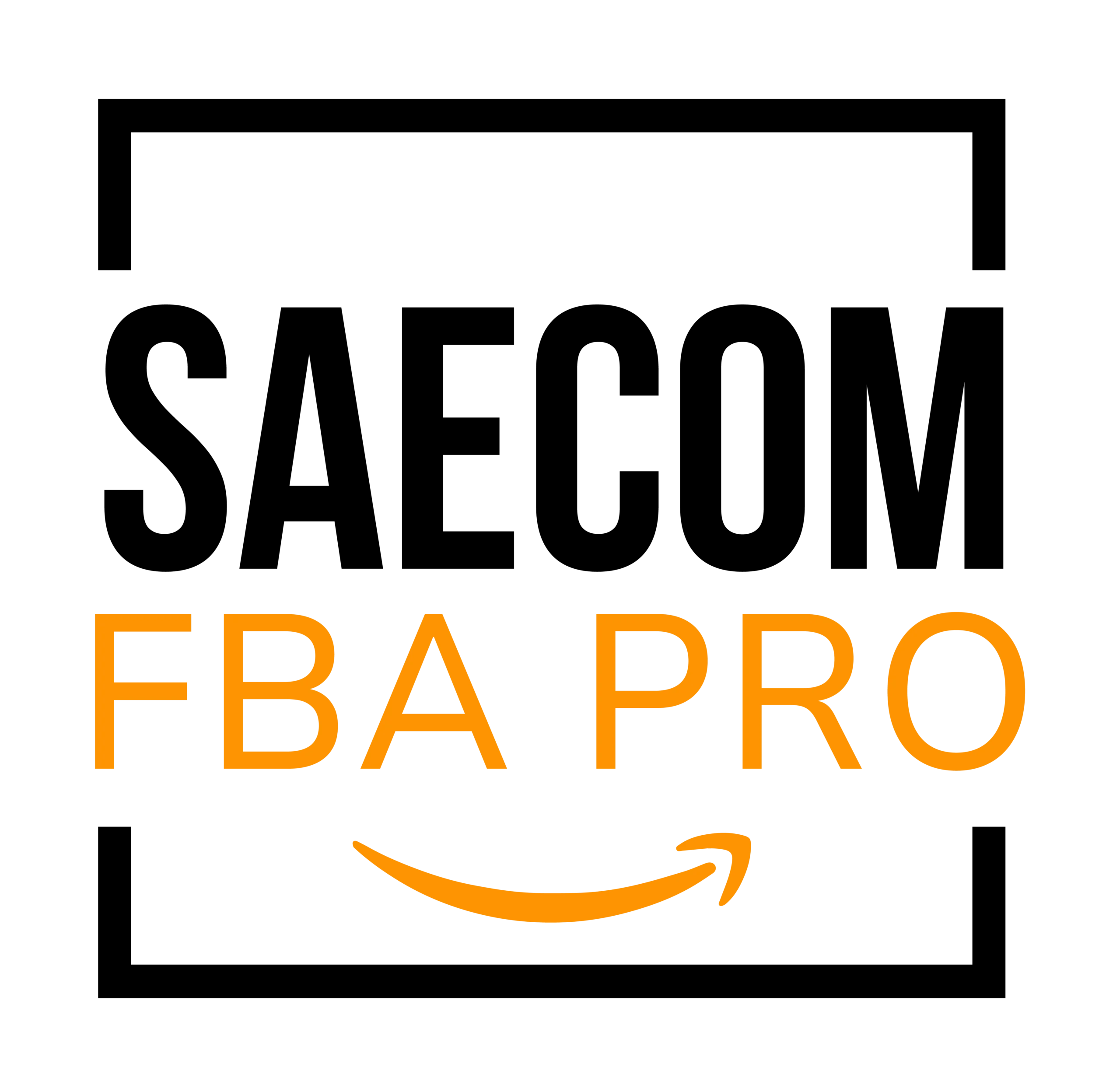Amazon Trends Explained: Stay Profitable in 2025
Keeping track of Amazon trends is crucial for sellers looking to stay ahead in a fast-moving e-commerce landscape. Consumer preferences and shopping habits are constantly changing, and adapting to these shifts is essential to remain relevant and profitable.
The online market evolves rapidly, and sellers must adjust with it. Would you, for example, invest heavily today in items like fidget spinners, portable DVD players, or virtual reality headsets? These products once performed well but have now faded due to changes in technology and consumer demand.
In this guide, we’ll take a close look at Amazon trends, explore their types, and share strategies for monitoring them effectively. You’ll also learn how to use these insights to make smart, data-driven decisions for your Amazon business.
What Are Amazon Trends and Why Do They Matter?

Amazon trends reflect patterns and shifts in the marketplace that shape seller success. These trends impact various aspects, including:
- Consumer preferences
- Product demand
- Market movements
They cover everything from trending product categories and price fluctuations to seasonal sales behavior and promotional strategies.
When sellers ask, “What product is selling the most on Amazon?” the answer constantly changes. Demand fluctuates based on seasons, market events, and evolving consumer needs.
For instance, consider a 2005 Amazon press release listing their top-selling items from 20 years ago. Now, compare that with their bestsellers during Black Friday and Cyber Monday in 2023. Clearly, to thrive as an Amazon seller, you must follow current trends, adapt quickly, and make decisions grounded in reliable data.
Key Types of Amazon Trends
Let’s go through the primary types of Amazon trends that every seller should track:
Amazon Search Trends
By analyzing search trends, sellers can identify popular keywords and phrases that buyers use to find products. This insight allows you to refine product titles, descriptions, and keywords to improve discoverability.
Example: Searches for “eco-friendly cookware” typically surge during Earth Day campaigns.
Amazon Price Trends
Pricing plays a key role in shoppers’ purchasing decisions. Monitoring price trends enables sellers to adjust prices dynamically, staying competitive while maintaining profits.
Example: Prices for fitness equipment often spike in January during New Year’s resolution season and drop by summer.
Amazon Sales Trends
Tracking sales trends helps sellers anticipate when demand for certain products will increase. This insight can guide inventory planning and promotional strategies.
A useful tactic is regularly reviewing Amazon’s Best Sellers Rank (BSR) list to identify trending products.
Example: Black Friday and Cyber Monday consistently drive high demand for electronics and home appliances.
Amazon Product Trends
Product trends reveal which items or categories are gaining popularity due to shifting customer preferences or market innovations.
Example: Rising demand for eco-conscious products like reusable water bottles and biodegradable packaging.
Amazon Seller Trends
These trends focus on operational changes among sellers, covering areas like marketing strategies, inventory management, and fulfillment methods.
Besides keeping an eye on Amazon policy updates, sellers should explore available tools and resources for streamlining operations.
Example: More sellers are adopting FBA (Fulfillment by Amazon) to offer faster shipping and better service.
Amazon Shopping Trends
Understanding how consumers behave on the platform is essential. From increasing mobile shopping habits to growing demand for sustainable packaging, these trends help sellers meet changing customer expectations.
Example: A significant portion of Amazon’s traffic now comes from mobile users, making mobile-optimized product listings vital.
How to Stay Updated on Amazon Trends

One common seller concern is how to find trending searches on Amazon. Here are reliable ways to keep up:
Use Amazon’s In-House Tools
Amazon provides several tools within its platform for trend tracking. Start by checking the Best Sellers page, which updates hourly and highlights top-performing products in each category.
You can also explore Amazon Insights, a market research feature offering detailed data on customer preferences. Participating in Amazon Seller Forums is another way to learn from fellow sellers and discuss current trends in real time.
Leverage External Resources
Third-party tools are excellent for deeper data analysis. Google Trends, for example, is a free platform where you can track consumer interest around specific products or topics. Simply enter a product keyword and check for spikes in search activity, which may indicate rising demand.
Example: Interest in the herbal supplement Ashwagandha has steadily increased over the last five years.
Additionally, platforms like Jungle Scout, AMZScout, and Helium 10 can track product trends, keyword popularity, and pricing data. Sellers can also consult with SAECOM FBA Pro for expert support in monitoring trends and optimizing areas like inventory management and marketing strategies.
Watch Your Competitors
Observing how your competitors adapt to Amazon trends can reveal valuable insights. Conduct a competitive analysis by reviewing their:
- Product listings
- Pricing tactics
- Customer feedback
See what’s working for them and identify gaps you can capitalize on.
Follow Consumer Behavior Reports
Staying aligned with broader consumer preferences ensures your Amazon business remains relevant. Keep track of demand for features like eco-friendly packaging, quick delivery options, and specific product categories.
Use these resources for consumer insights:
- McKinsey & Company: Detailed market and consumer behavior reports.
- Statista: Statistics and data on buyer habits and spending patterns.
- IBM Institute for Business Value: Studies on consumer expectations and purchasing preferences.
Subscribing to industry blogs and newsletters also ensures you receive regular updates on marketplace trends.
How to Apply Amazon Trend Insights

Following trends is only the first step—you need practical strategies to turn these insights into sales growth.
Optimize Product Listings
Stay aligned with Amazon search trends by regularly updating your product listings for visibility and conversions. Focus on:
- Including trending keywords in titles and descriptions
- Using high-quality images that highlight desirable product features
Example: If “sustainable kitchen gadgets” is trending, highlight eco-friendly materials in product descriptions and showcase them through lifestyle images.
Plan Inventory Around Trends
Monitoring Amazon sales trends enables sellers to manage inventory wisely and avoid missed sales opportunities.
Keep inventory levels high during peak sales periods like Prime Day or holiday seasons. Use past sales data to forecast demand for trending products. Amazon’s FBA inventory planner or third-party tools can help prevent both overstocking and stockouts.
Example: If demand for fitness products typically spikes in January, stock up well in advance.
Adjust Prices Dynamically
Even small price differences influence shopper decisions. Dynamic pricing lets sellers stay competitive and maintain profitability.
Using automated pricing tools helps match market fluctuations in real time without sacrificing margins.
Here’s how to use pricing trends effectively:
- Sales Events: Lower prices slightly during peak shopping days like Black Friday to attract buyers.
- Seasonal Demand: Raise prices modestly when demand is high, and competitors are out of stock.
- Slow Inventory: Drop prices to clear out products that aren’t selling as expected.
Prioritize Customer Experience
Trends in Amazon shopping habits are shaping what customers expect from sellers. Fast delivery, simple checkout processes, and sustainable packaging are now priorities.
Ways to enhance customer experience:
- Offer speedy delivery options like Prime One-Day Shipping, especially around holidays.
- Address negative reviews promptly and provide replacements or refunds to resolve complaints quickly.
Other Notable Amazon Trends
Product trends aren’t the only focus—several broader trends are shaping the future of selling on Amazon.
Informative, Practical Content
Today’s buyers prefer educational content over traditional sales pitches. Helpful content supports customers throughout their buying journey and enhances their decision-making.
Example: How-to guides, tutorials, eBooks, or white papers can add value and improve customer engagement with your products.
Artificial Intelligence (AI)
AI in e-commerce is projected to reach $16.8 billion by 2030. Sellers should start integrating AI tools for tasks like:
- Writing product descriptions
- Managing inventory
- Detecting fraud
- Personalizing product recommendations
AI improves operational efficiency and enhances customer targeting when paired with opt-in data collection.
Augmented Reality (AR) and Virtual Reality (VR)
AR and VR are becoming common in online shopping, particularly AR. By 2025, one-third of U.S. consumers will have tried AR shopping experiences.
Example: Shoppers using AR tools to visualize how furniture or clothing would look before making a purchase.
Social Media Shopping
With social shoppers making up 32% of U.S. consumers, platforms like TikTok, Instagram, and Facebook now offer integrated shopping features.
This is the ideal time for sellers to integrate social commerce into their Amazon business strategy.
Stay on Top of Amazon Trends
Keeping up with Amazon trends ensures your brand can flexibly adapt to changing consumer habits and demands.
Success on Amazon isn’t about luck. It comes from staying informed, acting quickly, and adjusting your business practices to meet the evolving needs of the marketplace.
If keeping up with Amazon’s shifting trends feels overwhelming, SAECOM FBA Pro is here to help you unlock your store’s full potential.


